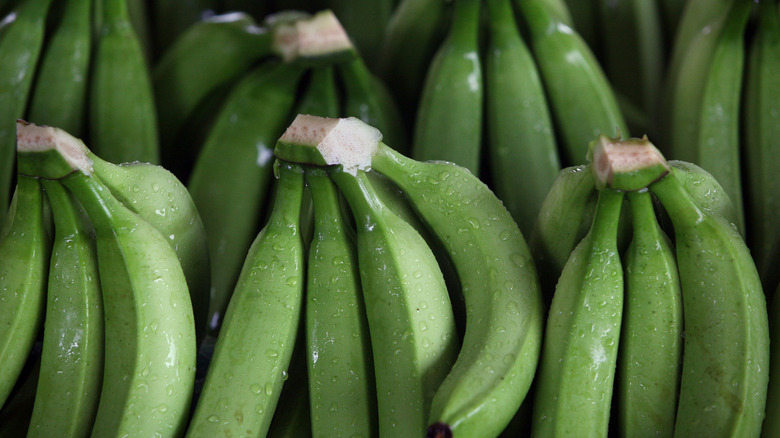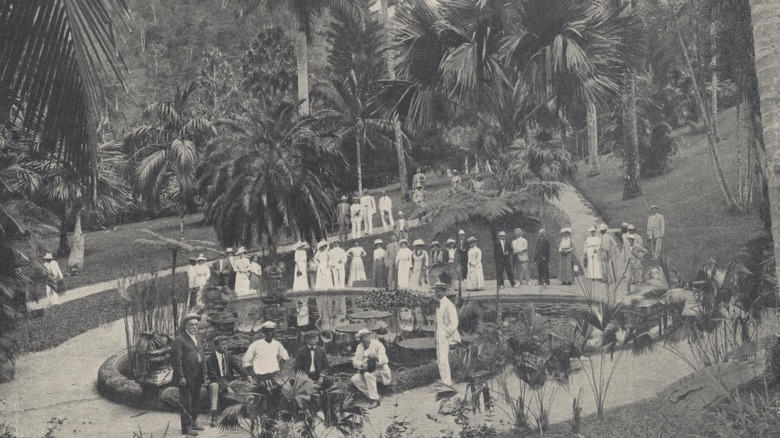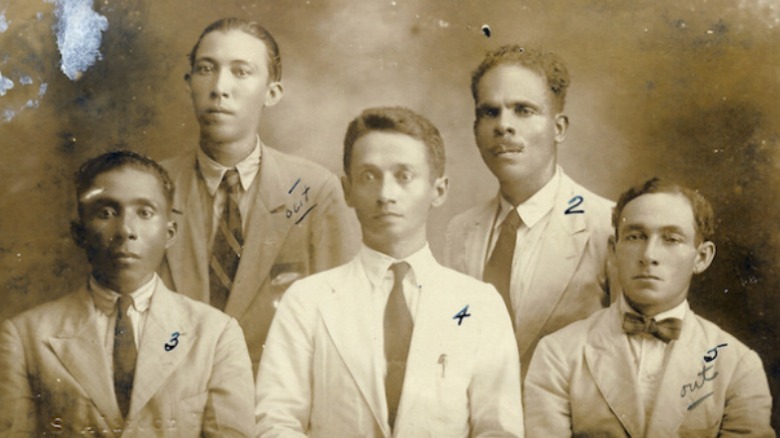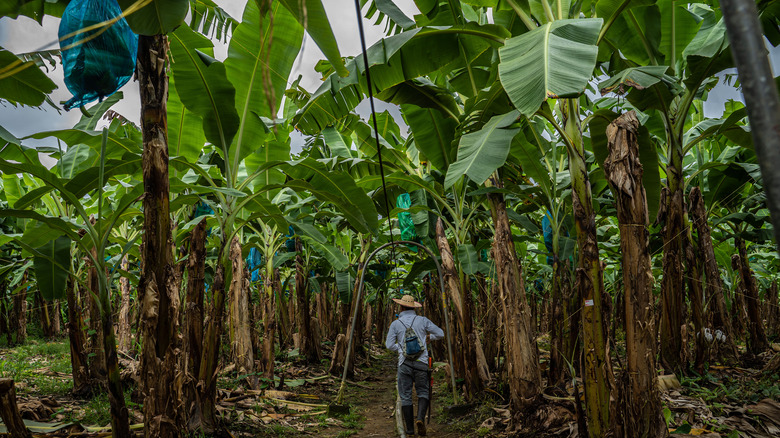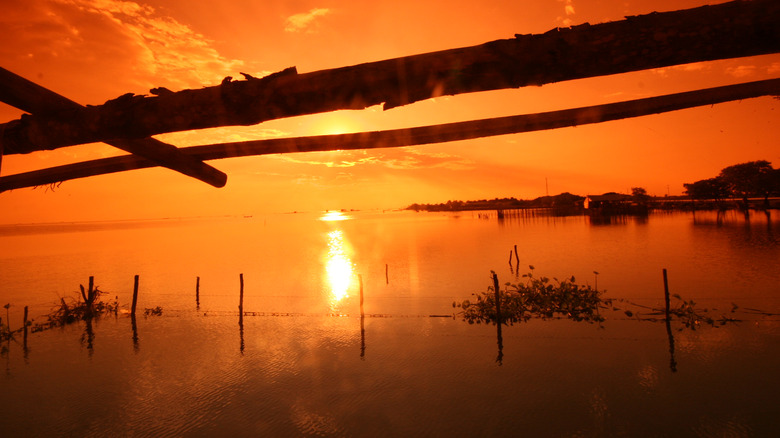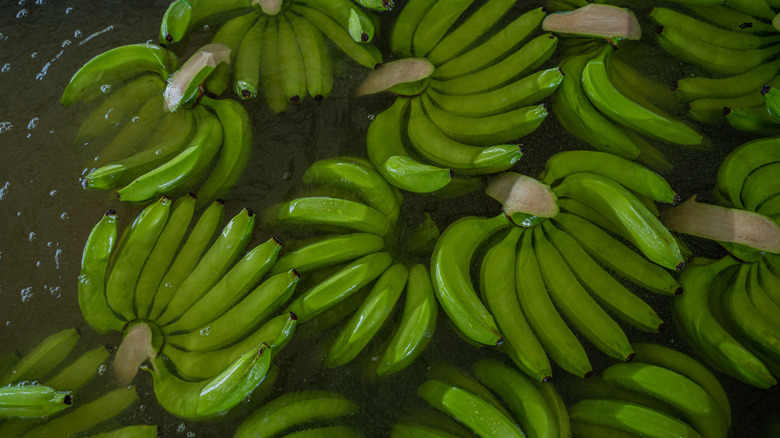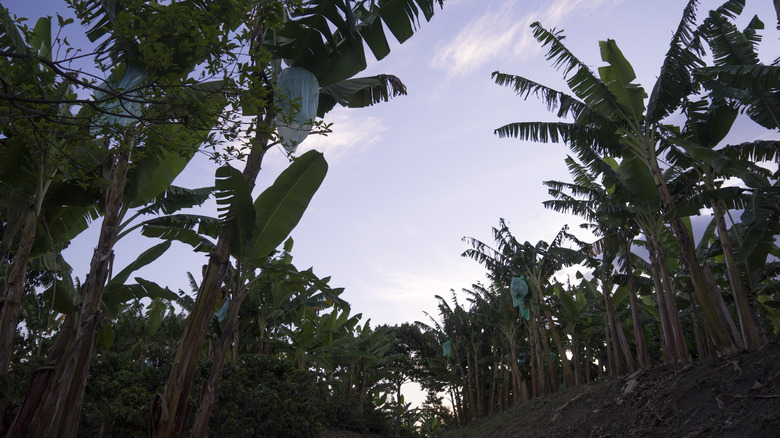The Untold History Of The Banana Massacre
Chiquita Brands International, once known as the United Fruit Company (UFC), has an incredibly sordid history. It's even been said that "perhaps no single company in U.S. corporate history has been more dominant during the first half of the 20th century, nor have there been many companies more controversial," (per Power, Powerlessness, and Globalization). Even the name change was a rebranding attempt to "shed some of its notoriety."
While the more popular UFC stories include their imposition of "banana republics" across Central America and the 1954 coup d'état against the Guatemalan government, the story of the 1928 Banana Massacre is comparatively lesser known. But it would become the first of many instances in which the UFC used governmental power to suppress workers' rights.
Although some, like Colombia's House Representative Maria Fernanda Cabal, have claimed that the 1928 Banana Massacre is a communist myth, the slaughter itself has never been historically disputed. However, the number of workers murdered is still being debated up to a century later, which allows claims that the massacre is a hoax. Unfortunately, the Banana Massacre was all too real.
UFC in Central and South America
The United Fruit Company was formed in 1899, and initially, the banana was sold as an exotic luxury. As the UFC's plantations started producing more and more bananas, bringing the price of bananas down, the company began marketing bananas in cities to the working class as well, according to the Financial Times.
By the 1920s, the UFC controlled fruit plantations in Jamaica, Cuba, the Dominican Republic, Guatemala, and Costa Rica. It also "owned chunks of Colombia and Ecuador." In Central America, UFC was widely known as "el pupo (the octopus) — [with] its tentacles everywhere." The company transported its fruit to North America and Europe with its 100 refrigerated ships, known as the Great White Fleet, which at the time was "the largest private navy in the world."
According to "Tropical Whites" by Catherine Cocks, the fleet was also used to bring American tourists to Central and South America. The "whiteness" of the fleet was especially underlined, so that even the crew members would switch to all-white uniforms as they journeyed south.
The UFC hired Black workers from the West Indies as well as Latinx workers in order to "play one race against the other," per H-Net, and undermine any united organizing effort. Housing was also segregated between Black people, Latinx people, and white people, with the homes of white people in a restricted "white people's zone," according to "Ethnicity at Work" by Philippe I. Bourgois.
Banana plantations on strike
On November 12, 1928, over 25,000 UFC plantation workers near Ciénaga, Magdalena, Colombia went on strike. According to "The Worker's Massacre of 1928 in the Magdalena Zona Bananera" by Jorge Enrique Elías Caro and Antonino Vidal Ortega, the strike was in response to the UFC's use of subcontractors, essentially freelancers, which allowed it to save money "by not paying legal labor benefits." And because the UFC claimed that the workers belonged to subcontractors rather than the company, it alleged that any abuses committed were the responsibility of the subcontractors. This behavior was apparently present in every country where the UFC was operating.
Ultimately, the strike was meant to force the UFC to follow "Colombian Labor laws approved in 1915, which the United Fruit Company avoided to comply [with] since it meant to grant certain benefits to workers." In addition to abolishing the contractor system, the Assembly of the Workers Union came up with eight other demands, including collective insurance, compensation for accidents, payment in actual wages rather than company coupons, and a pay increase for those earning less than 100 pesos per month, per Collecteurs.
The strike was supported by a variety of groups, including union leaders, small landowners, and members of the Revolutionary Social Party. By the beginning of December, the UFC's banana harvesting in Colombia had ground to a half. Yet, before the first week of December ended, the military arrived to suppress the strike.
Acting in UFC's interests
In the beginning of December 1928, between 200 and 300 soldiers arrived on a steamship and took over Ciénaga's town hall "without the mayor's authorization." Although the Ciénaga newspaper reported that "We do not know who ordered changing the town house into a campsite of troops, but we are certain that the municipality spokesman was not consulted for this illegal occupation," they were soon about to realize how far the soldiers were willing to go.
Caro and Ortega write that military roadblocks were put up and soldiers searched trains in order to prevent striking workers from using them. Communication systems were also disrupted due to military pressure.
Telegrams from the U.S. Department of State to Colombia also reveal that the UFC worked with the American government to pressure the Colombian government into maintaining the company's interests. On December 8, 1928, the Department of State wrote to the Santa Marta Consulate that "The Legation at Bogota reports that categorical orders have been given [to] the authorities at Santa Marta to protect all American interests."
Despite claiming that the United States didn't have a "desire to send a war ship," the threat of invasion loomed from the U.S. Marine Corps stationed near Ciénaga, according to Collecteurs.
A massacre in the main square
On the evening of December 5, 1928, striking UFC workers gathered together for a public demonstration in the main square of Ciénaga. After Sunday Mass ended, they were also joined by their families, wives, and children. Although Gov. Nuñez Roca decreed for the demonstration to end, the workers claimed that the governor was making this decision with UFC and that the authorities were clearly "defending the interests of the Company and the local 'bananacracy.'"
Led by General Cortés Vargas, the soldiers closed off the main street leading into the central square and set up machine guns "on the roofs of the surrounding low buildings." In "Banana: A Global History," Lorna Piatti-Farnell writes that the demonstrators were given a "laughable five-minute warning" to disperse. After the five minutes were up, and although some accounts claim at least 15 minutes was given, the soldiers started spraying the crowd with gunfire.
According to Caro and Ortega, the protesters were unarmed and did nothing to incite the violence other than shout and wave Colombian flags. Tragically, it didn't take long for the main square to soon be covered in a wave of blood.
A handful of survivors
It's unclear exactly how many people were killed by the soldiers who opened fire on the demonstrators in the Ciénaga main square in the early hours of December 6, 1928. General Vargas took responsibility for 47 casualties, according to "Banana: A Global History." When the newspaper La Prensa first reported on the massacre, it listed eight dead and 20 wounded. The following week, La Prensa reported on the massacre again, stating this time that the numbers were closer to 100 dead and almost 240 wounded, write Caro and Ortega.
Meanwhile, a telegram sent from the Bogotá Embassy to the U.S. Secretary of State on December 29, 1928, stated, "I have the honor to report that the legal advisor of the United Fruit Company here in Bogotá stated yesterday that the total number of strikers killed by the Colombian military authorities during the recent disturbance reached between five and six hundred; while the number of soldiers killed was one." And on the following January 16, 1929, another telegram read, again with "the honor to report," that the total number of strikes killed actually "exceeded one thousand."
Based on testimonies and official sources, it's believed that the number of people killed may have been as high as 2,000. After the massacre, the army put the bodies into the trains and transported them to mass graves in "inaccessible areas" or threw them out to sea.
Legacy of the Banana Massacre
Even after the massacre ended, the striking workers who survived were still targeted by the UFC. In "Ethnicity at Work," Bourgois writes that photographs of the surviving strike leaders were sent to "all division managers with a brief psychological sketch." Ultimately, few of the original striking workers remained in the area. Many feared persecution and arrest, creating a "massive exodus of the terrified population."
Unfortunately, this fear was well-justified. In order to protect its image, Caro and Ortega write that the UFC and the Colombian government spun the narrative and claimed that the striking workers were "a gang of outlaws" looking to overthrow the government. General Cortés Vargas declared martial law and even issued a decree claiming that the workers were outlaws guilty of numerous crimes. When the workers were caught, they were detained and judged by a Martial Court. According to Harvard Political Review, General Vargas justified the massacre by claiming the two U.S. ships stationed near Colombia were ready to send troops if American interests were threatened, and that his actions were a "defense of Colombian sovereignty."
In 1967, Colombian author Gabriel García Márquez re-imagined the massacre through the fictional character José Arcadio Segundo Buendía, who manages to survive the massacre and awakens on a train surrounded by corpses to "be thrown in the sea like rejected bananas," per Novel Testimony by Jennifer Harford Vargas.
